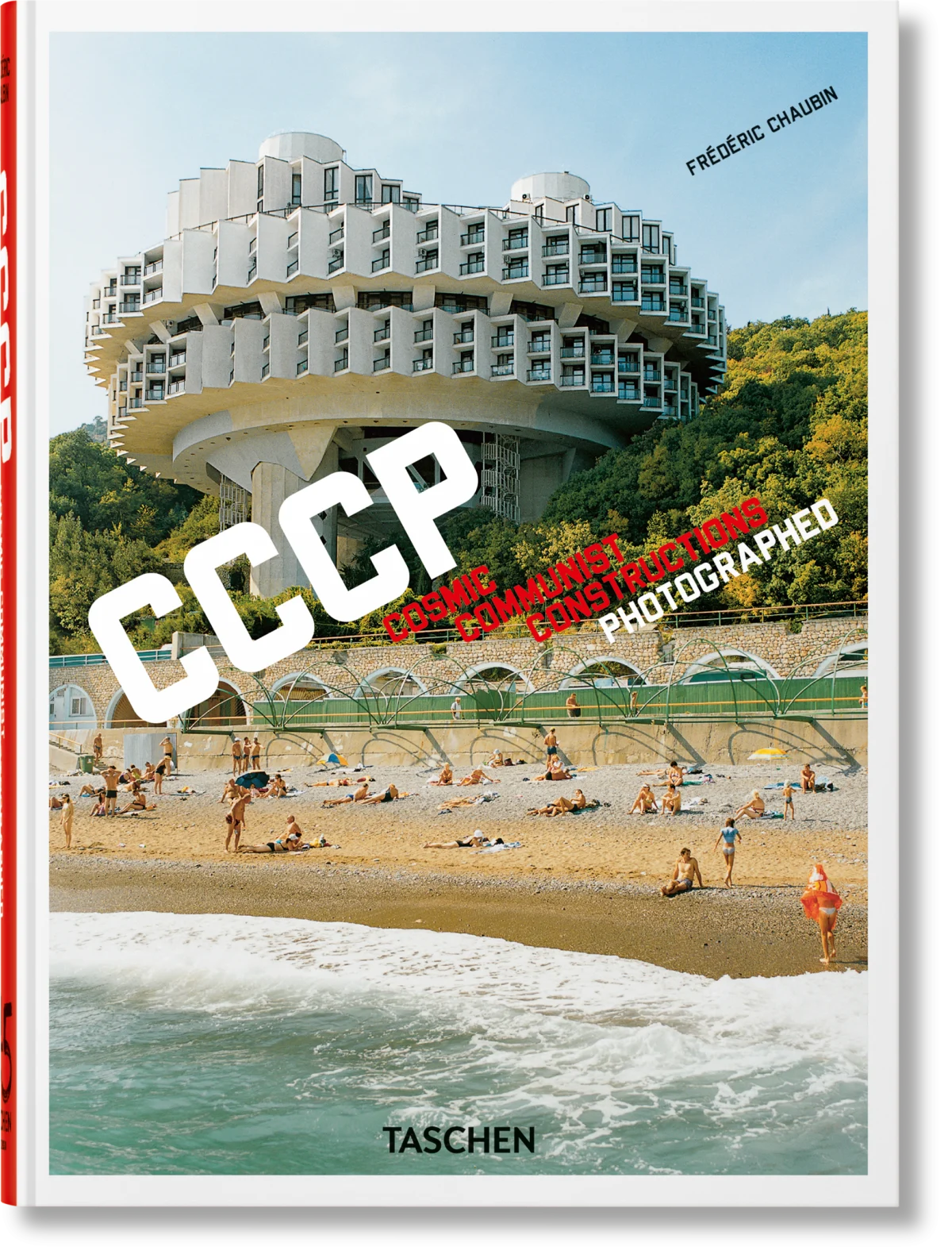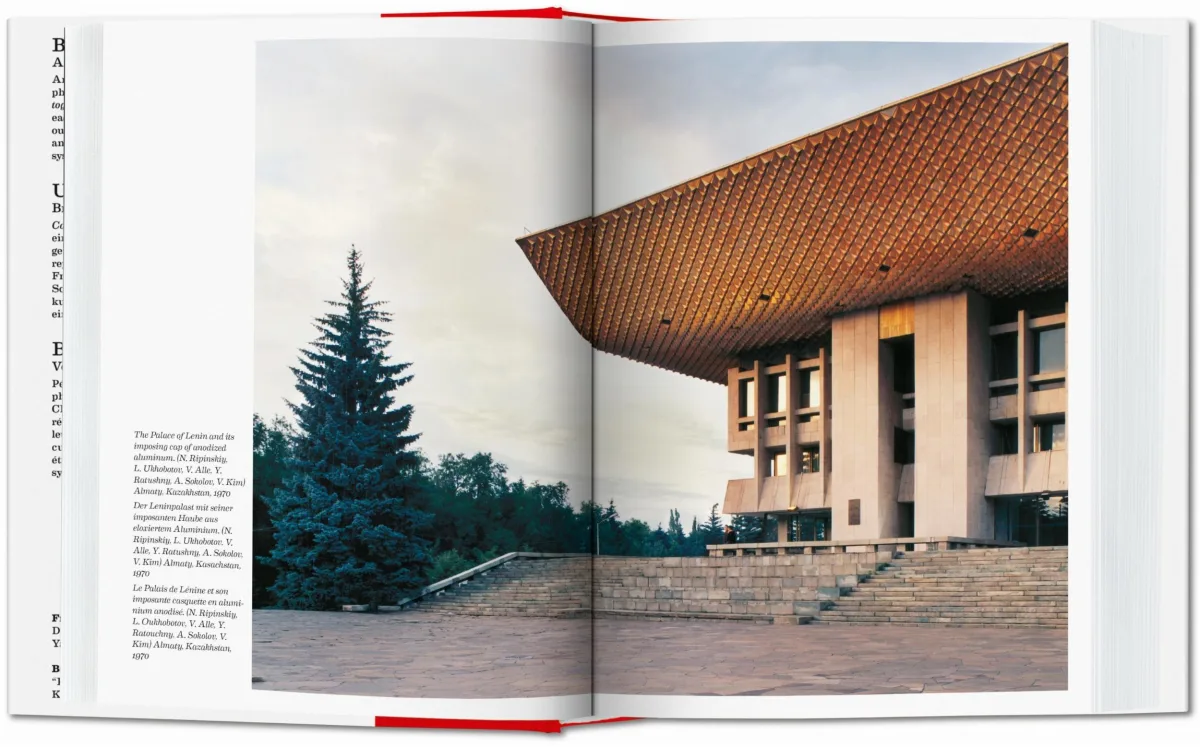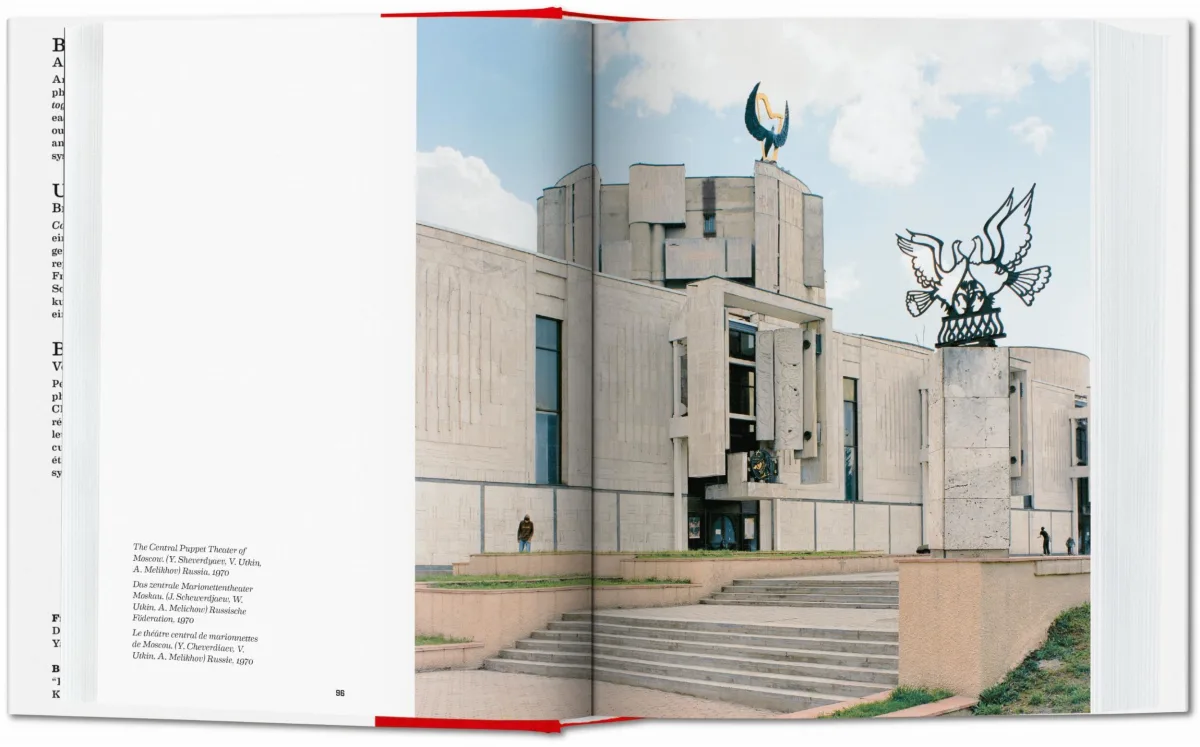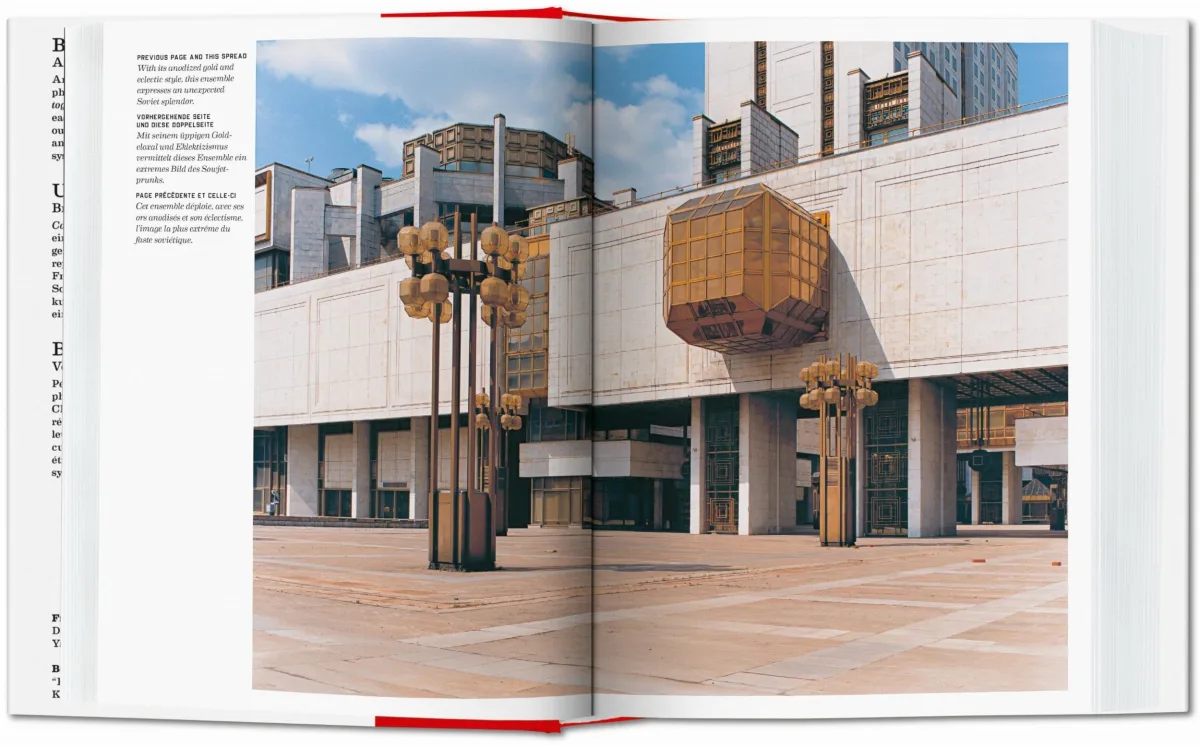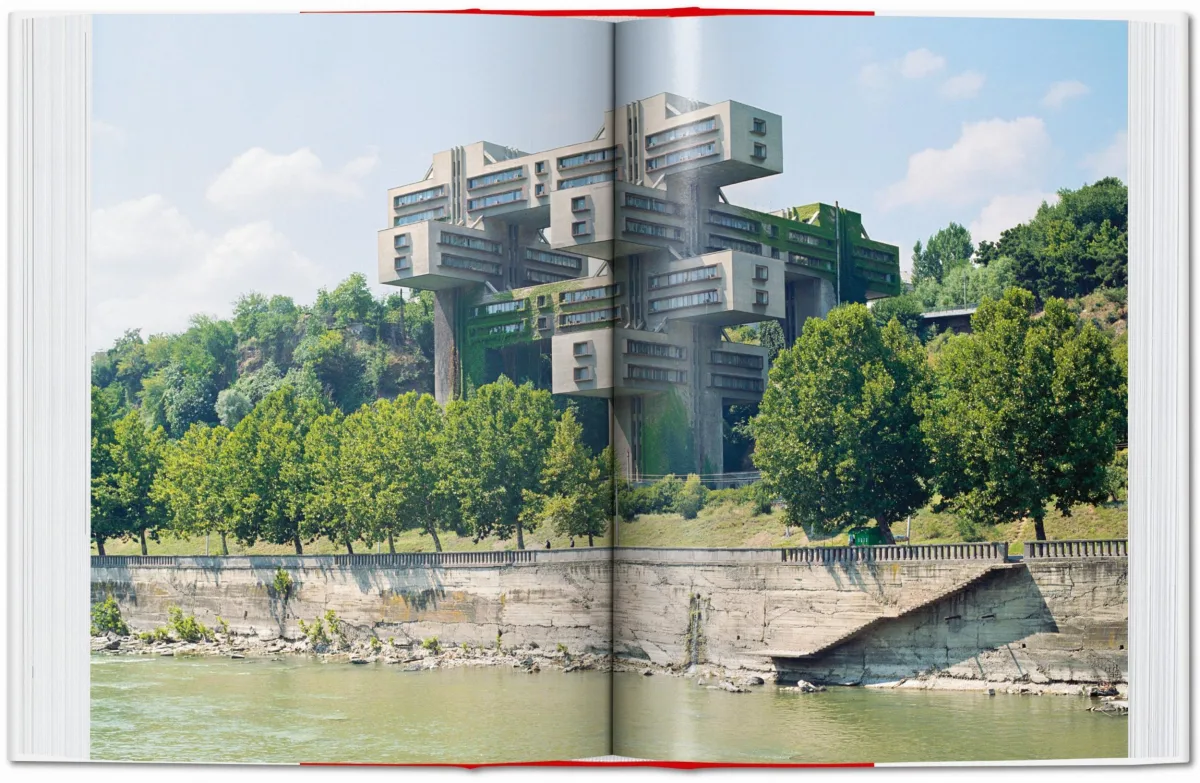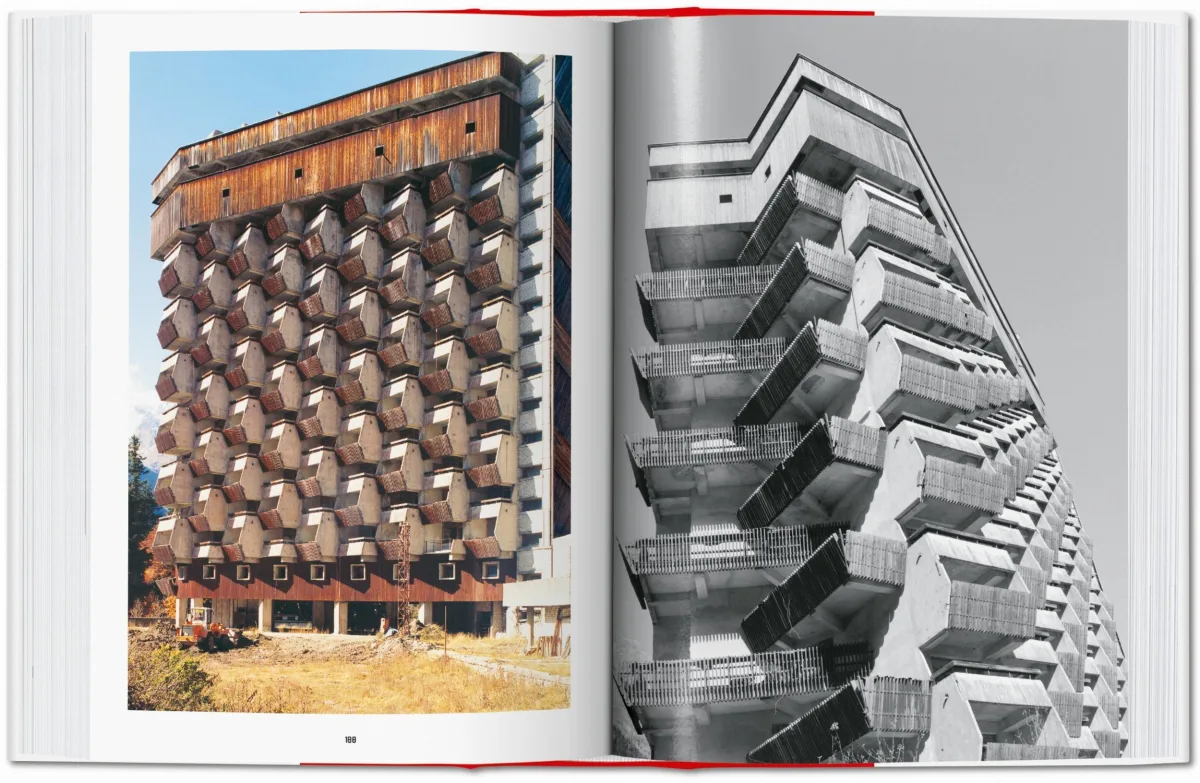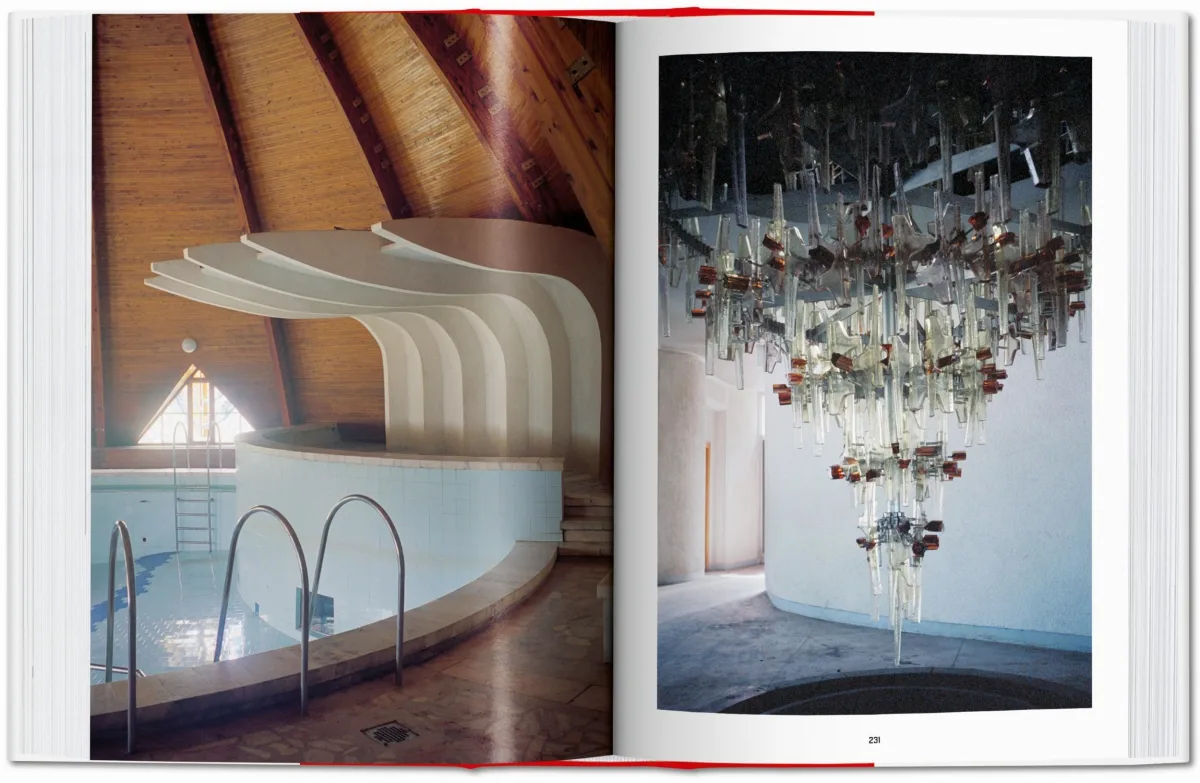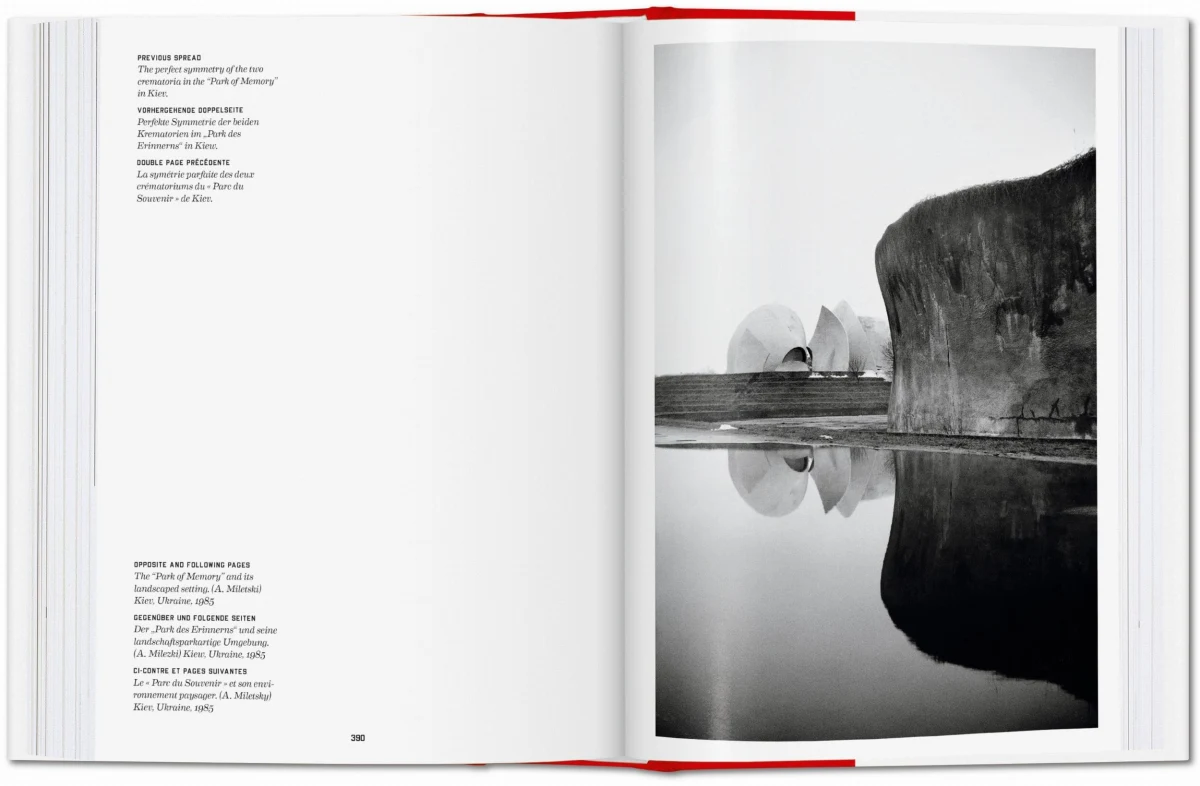1 / 8
Frédéric Chaubin. CCCP. Cosmic Communist Constructions Photographed. 45th Ed.
30Edition: Multilingual (English, French, German)Availability: In StockFrédéric Chaubin’s Cosmic Communist Constructions Photographed features 90 Soviet buildings throughout the former USSR, each built between 1970 and 1990. It is a journey through time. With local exoticism, outlandish ideas, and a puzzle of styles, these weird and wonderful buildings are unearthly reminders of a fallen ideology.
Hardcover, 6.1 x 8.5 in., 2.20 lb, 440 pages
“One of the most splendid of recent architectural publications and a revelation. It illustrates late Soviet public buildings almost entirely unknown in the West.”

Frédéric Chaubin. CCCP. Cosmic Communist Constructions Photographed. 45th Ed.
30Brutalist Beauties
Architectural remnants of the USSR
Elected the architectural book of the year by the International Artbook and Film Festival in Perpignan, France, Frédéric Chaubin’s Cosmic Communist Constructions Photographed explores 90 buildings in 14 former Soviet Republics. Each of these structures expresses what Chaubin considers the fourth age of Soviet architecture, an unknown burgeoning that took place from 1970 until 1990.
Contrary to the 1920s and 1950s, no “school” or main trend emerges here. These buildings represent a chaotic impulse brought about by a decaying system. Taking advantage of the collapsing monolithic structure, architects went far beyond modernism, going back to the roots or freely innovating. Some of the daring ones completed projects that the Constructivists would have dreamt of (Druzhba Sanatorium, Yalta), others expressed their imagination in an expressionist way (Palace of Weddings, Tbilisi).
A summer camp, inspired by sketches of a prototype lunar base, lays claim to Suprematist influence (Prometheus youth camp, Bogatyr). Then comes the “speaking architecture” widespread in the last years of the USSR: a crematorium adorned with concrete flames (Crematorium, Kiev), a technological institute with a flying saucer crashed on the roof (Institute of Scientific Research, Kiev), a political center watching you like Big Brother (House of Soviets, Kaliningrad).
In their puzzle of styles, their outlandish strategies, these buildings are extraordinary remnants of a collapsing system. In their diversity and local exoticism, they testify both to the vast geography of the USSR and its encroaching end of the Soviet Union, the holes in a widening net. At the same time, they immortalize many of the ideological dreams of the country and its time, from an obsession with the cosmos to the rebirth of identity.
Contrary to the 1920s and 1950s, no “school” or main trend emerges here. These buildings represent a chaotic impulse brought about by a decaying system. Taking advantage of the collapsing monolithic structure, architects went far beyond modernism, going back to the roots or freely innovating. Some of the daring ones completed projects that the Constructivists would have dreamt of (Druzhba Sanatorium, Yalta), others expressed their imagination in an expressionist way (Palace of Weddings, Tbilisi).
A summer camp, inspired by sketches of a prototype lunar base, lays claim to Suprematist influence (Prometheus youth camp, Bogatyr). Then comes the “speaking architecture” widespread in the last years of the USSR: a crematorium adorned with concrete flames (Crematorium, Kiev), a technological institute with a flying saucer crashed on the roof (Institute of Scientific Research, Kiev), a political center watching you like Big Brother (House of Soviets, Kaliningrad).
In their puzzle of styles, their outlandish strategies, these buildings are extraordinary remnants of a collapsing system. In their diversity and local exoticism, they testify both to the vast geography of the USSR and its encroaching end of the Soviet Union, the holes in a widening net. At the same time, they immortalize many of the ideological dreams of the country and its time, from an obsession with the cosmos to the rebirth of identity.
The author
Frédéric Chaubin was the editor-in-chief of the French lifestyle magazine Citizen K for twenty years. Since 2000, he has regularly published works on architecture, combining text and photography, and presented accompanying exhibitions and lectures. He approaches his architectural research through a historical lens. After his CCCP collection research, published in 2011, he has delved into the remains of the medieval world, with his TASCHEN title Stone Age. Ancient Castles of Europe.
Frédéric Chaubin. CCCP. Cosmic Communist Constructions Photographed. 45th Ed.
Hardcover, 15.6 x 21.7 cm, 1.00 kg, 440 pagesISBN 978-3-8365-8779-2
Edition: Multilingual (English, French, German)Download product images here
No reviews have been posted for this item yet. Be the first to rate this product.

